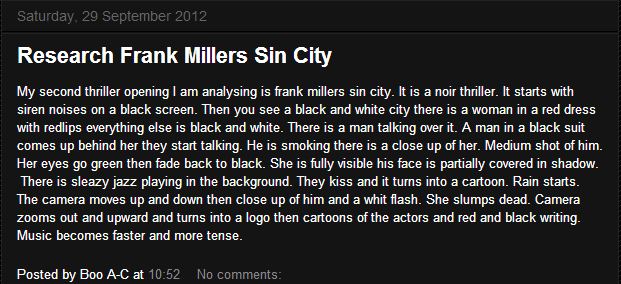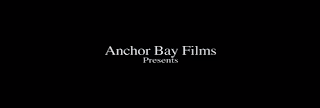Beth's research of title sequences throughout time has helped me learn about how title sequesnces have changed. As she's added in links to the title sequcnes she's looked it, it helped me see the change and then see what Beth's opinions on the title sequences were. It was interesting to find out what title sequences used to be like, and what they are like now. To improve her research Beth could have made it more detailed, maybe saying about why they have changed and made more specific descriptions on how they have changed.
Beth's work links into the lessons we learned on genre previously as we have recently been learning about sub genre. Firstly, before I looked at Beth's research I didn't know a lot about what made a thriller into different sub genres, so I personally now know the difference between a techno thriller and a super natural thriller for example. I think that it's really good how Beth has named the different types of sub thrillers and then made detailed descriptions of what makes that thriller a sub genre. It was useful that Beth gave examples of films which were each type of thriller as I have watched many of the films that Beth gave examples of, so I can link them to the sub genres. This will be useful for the later stages of our work when we need to see what we need to include in our work if we chose to make our thriller one of these. Beth's work is really detailed and has some really good analysis and some good points for each of the descriptions, I found it very interesting and helpful; I now know more about sub genres.
















